Multiple dead in powerful Japan earthquake
By Helen Regan, Sana Noor Haq, Antoinette Radford and Elise Hammond, CNN
- All
- Catch Up
New Year's Day earthquake rattles Japan, killing at least 4 people. Catch up here
From CNN Staff
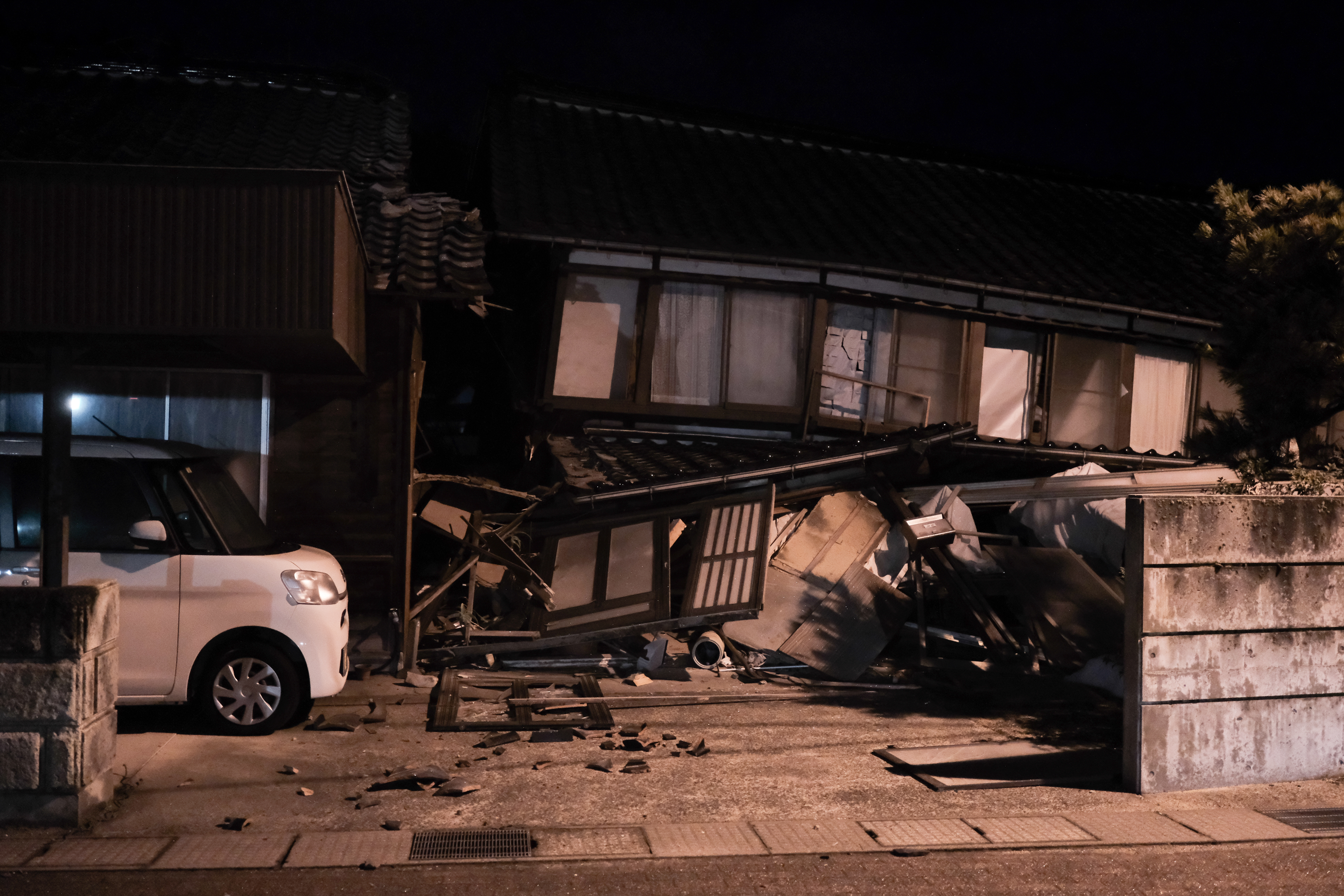
Japan was shaken by a 7.5 magnitude earthquake Monday that has left at least four people dead and another two seriously injured, according to officials.
The quake struck at 4:10 p.m. local time at a depth of 10 kilometers (6 miles) in the Noto Peninsula of Ishikawa prefecture, according to the United States Geological Survey.
The quake collapsed buildings, cased fires and triggered tsunami alerts as far away as eastern Russia, prompting orders for residents to evacuate affected coastal areas of Japan.
Here's what to know:
- Tsunami warnings: After the earthquake, authorities issued tsunami warnings to residents of Japan's west coast. Those warnings have since been downgraded to advisories. Tsunami warnings are issued when waves are expected to be up to 3 meters (9.8 feet). Tsunami waves of around 1.2 meters (3.9 feet) were reported in Wajima City, Japanese public broadcaster NHK said.
- Aftershocks to continue: According to the United States Geological Survey, at least 31 smaller aftershocks were reported near the region where the earthquake struck. The agency said aftershocks could continue for days to months to follow.
- Train passengers trapped: At least 1,400 passengers are stranded inside high-speed bullet trains more than 10 hours after the earthquake shook the region, Japan's public broadcaster NHK reported.
- Damage to infrastructure: The earthquake on Monday sliced through highways in central Japan, collapsed buildings, caused blazes and disrupted communications. At least 33,000 households were affected by power outages, said Japanese Chief Cabinet Secretary Hayashi Yoshimasa, according to NHK.
- Rescue and recovery efforts: At least 8,500 military personnel are on standby to help with emergency efforts following the quake, said Japan's Defense Minister Minoru Kihara. Health officials in the city of Suzu said some doctors could not treat wounded patients because damaged roads mean they are unable to travel to work.
- US support: The Biden administration is in touch with Japanese officials, and the United States "stands ready to provide any necessary assistance for the Japanese people," according to a statement.
At least 31 aftershocks recorded since earthquake struck, USGS says
From CNN’s Joe Sutton
The United States Geological Survey says there have been 31 aftershocks following the 7.5 magnitude earthquake that struck western Japan on Monday, collapsing buildings, causing fires and triggering tsunami alerts.
Of the 31 aftershocks, “the largest aftershock so far was a magnitude 6.2 which occurred 8 minutes after the initial earthquake,” USGS seismologist Jessica Turner in the Golden, Colorado, office told CNN on Monday.
According to Turner, a magnitude 5.5 foreshock took place 4 minutes before the magnitude 7.5 earthquake occurred.
“Normally with quakes of this size, we can see aftershocks for the next several days to a week but can go as long as several months,” Turner noted.
At least 4 people confirmed dead in New Year's Day quake
From CNN’s Chie Kobayashi in Tokyo and Eve Brennan in London
At least four people have died in Japan’s Ishikawa prefecture following a 7.5 magnitude earthquake that struck Japan on Monday, according to local authorities.
Two people are also reported to have been seriously injured by the quake, officials said.
Biden offers support to Japan following earthquake
From CNN's Sam Fossum

US President Joe Biden is extending support to Japan after a powerful earthquake shook the western area of the country on Monday.
The Biden administration is in touch with Japanese officials, and the United States "stands ready to provide any necessary assistance for the Japanese people," according to a statement.
“As close Allies, the United States and Japan share a deep bond of friendship that unites our people. Our thoughts are with the Japanese people during this difficult time,” Biden said in the written statement.
About 1,400 passengers remain stranded on bullet trains in Japan following earthquake
From CNN's Junko Ogura in Tokyo and Jonny Hallam
Four bullet trains that came to a halt between the cities of Toyama and Kanazawa in Japan's Ishikawa prefecture during Monday's powerful earthquake remained at a standstill on Tuesday local time.
Japan's public broadcaster NHK, citing Japan Railways West, reported that nearly 1,400 passengers continued to be stranded inside the immobile high-speed trains more than 10 hours since the powerful tremor shook the region.
Japan removes tsunami warnings, but tsunami advisories remain in effect
From CNN's Hanako Montgomery in Tokyo
The tsunami warnings along portions of Japan’s western coast have been canceled as the threat of additional large waves diminishes.
While the threat of larger waves has now passed, tsunami advisories for waves up to 1 meter (about 3 feet) remain in effect.
Watch the moment tsunami wave reached Ishikawa prefecture
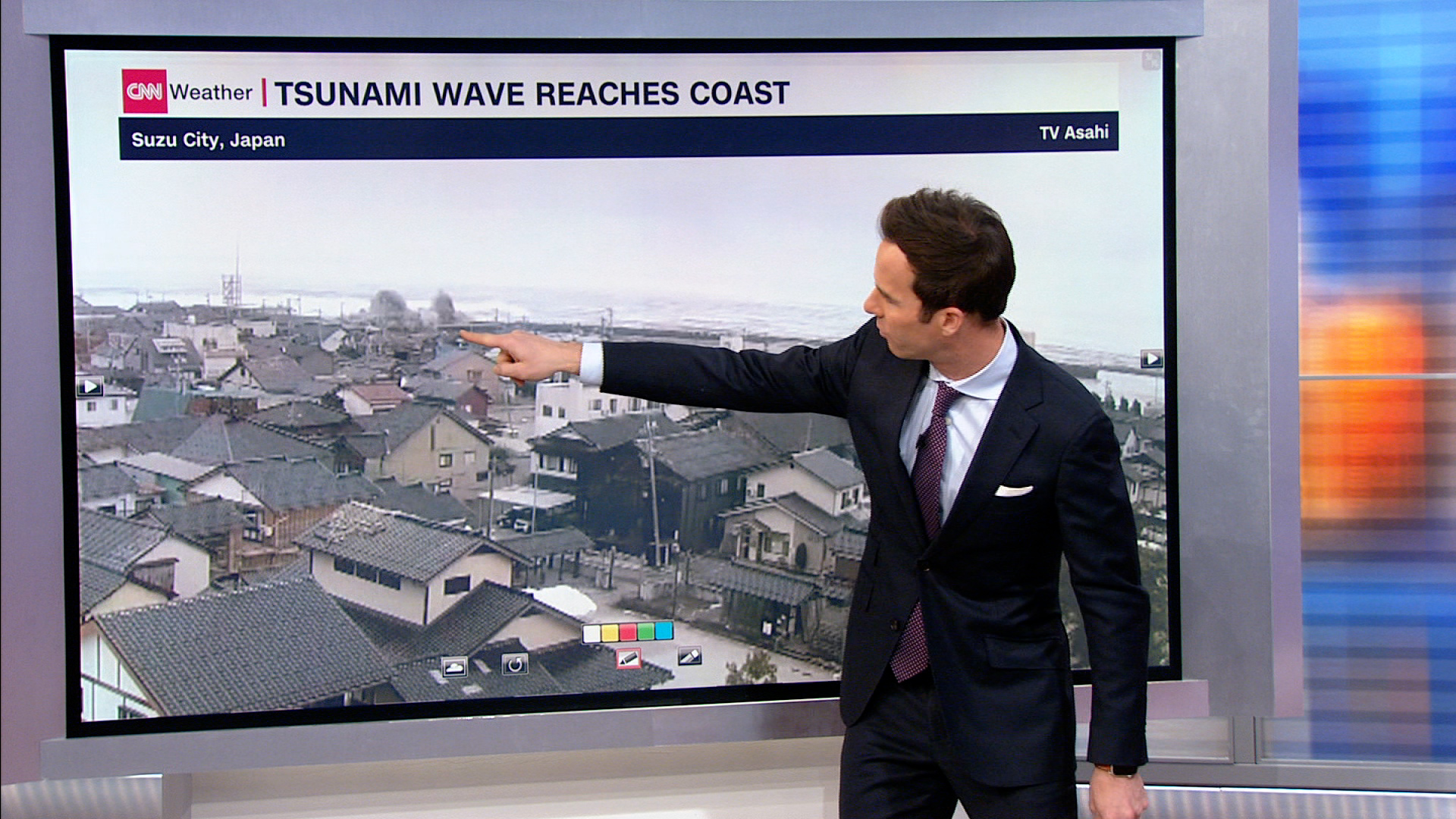
While a wave that struck a protective sea wall in the western Japanese city of Suzu "could have been a lot worse," according to CNN meteorologist Derek Van Dam, there is still a threat of tsunami waves following a 7.5 magnitude earthquake.
The video shows the sea wall as a barrier for the city, which is on the opposite side of the peninsula where the earthquake occurred.
“Think of it as if you had a bathtub full of water and you were to drop a rock inside of it. It creates waves that propagate in all directions. They reach the side of your bath and then come in towards the center again. Same idea here,” he said.
Watch his full analysis here:
Aftershocks could continue for months after western Japan earthquake, seismologist says

A seismologist with the US Geological Survey warned that aftershocks caused by the 7.5 magnitude earthquake that struck western Japan on Monday could last for months.
Susan Hough said people living in that part of the country have felt earthquakes before, but she believes this is “the biggest earthquake by far” — which means most residents likely don’t have experience with a seismic event of this scale.
“An earthquake this big is going to continue to have aftershocks. It could easily have aftershocks bigger than magnitude 6, so that is going to be a hazard in its own right,” Hough said.
The initial earthquake collapsed buildings, caused fires and triggered tsunami alerts as far away as eastern Russia, prompting orders for residents to evacuate affected coastal areas of Japan.
In 2011, a 9.1 magnitude earthquake in eastern Japan caused a tsunami with 30-foot waves that damaged several nuclear reactors. Hough said, comparatively, while the risk of a tsunami of that 2011 size is less likely in the case of Monday’s earthquake, people living near the coast should still evacuate.
Some of the first reports came from the city of Wajima in Ishikawa prefecture, which saw tsunami waves of around 1.2 meters (3.9 feet) around 4:21 p.m. local time, according to Japanese public broadcaster NHK.
Ultimately, location plays a major part in how big of an impact an earthquake can have, Hough added.
Hough said this earthquake was shallow. "Where the fault was moving was very close to where people were living, and that can concentrate shaking close to where the earthquake happened. The energy just doesn't have a lot of time to travel and spread out before it gets close to where people live," she explained.
Snowboarders describe moment earthquake hit Ishikawa
Taiwanese tourist Johnny Wu was waiting for a bus home when the earthquake struck western Japan, describing people as "panicked" once the shaking started.
"You can see all the snow from the the electric wire goes down, and also (the snow) from the roof fell down and all the cars are shaking. And so everybody was panicked at that time," he told Reuters.
Wu said he has experienced earthquakes, but he was "still worried about (the quake) getting more serious."
Baldwin Chia, a 38-year-old tourist from Shanghai, said he was with a group of snowboarders and described the quake as "pretty massive."
"The whole room was shaking, the TV was shaking. I had to keep everything on the table. ... I did feel safe in my room, though. But everything else was shaking," he told Reuters.
Chia said his friends were outside at the time of the earthquake, adding "my first instinct was also just to text them, to see if they're OK. Definitely I was asking about the (possible) avalanches."
"It is quite scary, definitely. You know, when you hear about earthquakes in Japan, you wouldn't expect one to, you know, to actually experience one," he said.
Japan was hit by a powerful earthquake. Here's what you need to know
From CNN staff
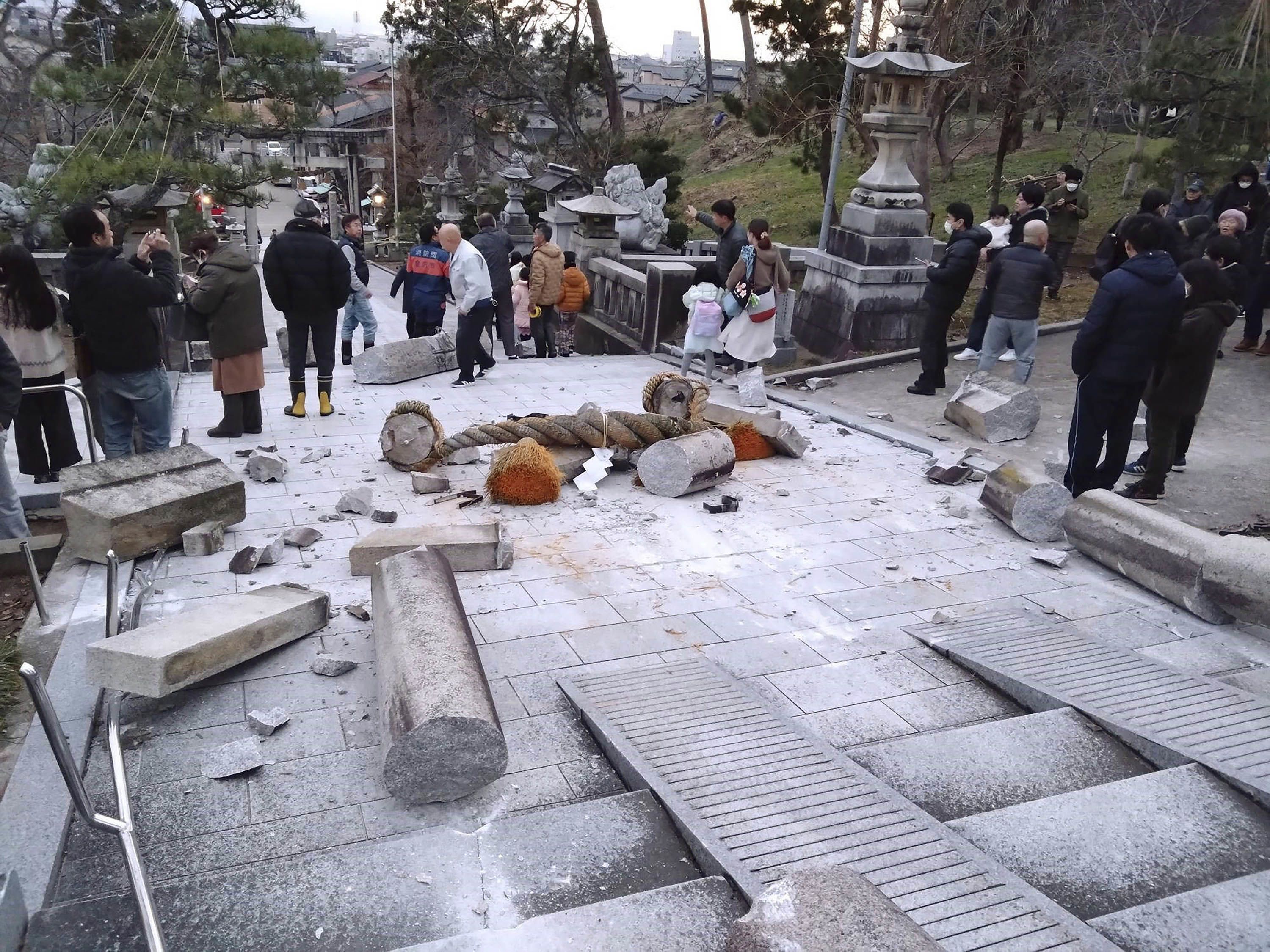
A powerful 7.5 magnitude earthquake struck western Japan on Monday afternoon, triggering tsunami waves and causing damage to roads, power, transport services and infrastructure.
Japanese officials warned residents in affected areas to evacuate to higher ground, as 1,000 military personnel from the Self-Defense Forces were dispatched to aid rescue and recovery efforts.
Here are the latest developments:
- Earthquake hits: The quake, which had a depth of 10 kilometers (6 miles), hit at 4:10 p.m. local time around 42 kilometers (26 miles) northeast of Anamizu in Ishikawa prefecture, according to the United States Geological Survey. Several aftershocks were reported in western Japan, USGS said, including a 6.2 magnitude aftershock around 4 kilometers (2.4 miles) southwest of Anamizu.
- Tsunami warnings: Authorities issued tsunami warnings to residents of western Japan. Tsunami warnings are issued when waves are expected to be up to 3 meters (9.8 feet). Tsunami waves of around 1.2 meters (3.9 feet) were reported in Wajima City, Japanese public broadcaster NKH said. In Toyama City and surrounding areas, waves of less than 1 meter were reported, while the city of Noto remained under a tsunami warning.
- Damage to infrastructure: The earthquake on Monday sliced through highways in western Japan, collapsed buildings, caused blazes and disrupted communications. As many as 33,000 households may be affected by power outages, said Japanese Chief Cabinet Secretary Hayashi Yoshimasa, according to NHK.
- Transport disruption: At least five highways have been closed and several flights canceled across airports in Ishikawa prefecture. Two flights were canceled at Noto Airport, where there is a crack on the runway. A flight from Tokyo landed earlier but turned back to the capital. There were 15 cancelations at Komatsu Airport. Schools were not in session, but 21 school facilities are being formed into evacuation centers.
- Rescue and recovery efforts: At least 8,500 military personnel are on standby to help with emergency efforts following the quake, said Japan's Defense Minister Minoru Kihara. Health officials in Suzu City said some doctors could not treat wounded patients because damaged roads mean they are unable to travel to work.
- Scenes of trapped residents: Civilians screamed in videos posted to social media after entire homes were flattened in western Japan. In another video, people crouched under tables at a local bowling alley, where tremors shook the infrastructure and TV screens could be seen shaking from the ceiling. "My city is in a terrible state," one person said in a video posted from Noto. "I hope there is no fire."
Japan dispatches 1,000 military personnel to quake zone
From CNN's Mayumi Maruyama
Japan is dispatching 1,000 military personnel to help rescue and recovery efforts following the 7.5 magnitude earthquake on Monday, the country's defense minister has said.
Minoru Kihara told reporters some members of the country's Self-Defense Forces have already reached the cities of Wajima and Suzu in Ishikawa prefecture.
Another 8,500 are on standby, he added.
Officials in several cities in Ishikawa prefecture reported damaged buildings, power outages, fires and cracks in roads.
People hide under tables as earthquake rips through homes and roads in western Japan
From CNN's Sana Noor Haq

Damaged roofs and wooden beams from collapsed houses were strewn across Wajima City in Ishikawa prefecture Monday after a 7.5 magnitude earthquake hit western Japan.
The quake struck at 4:10 p.m. local time around 42 kilometers (26 miles) northeast of Anamizu in Ishikawa prefecture, according to the United States Geological Survey.
Several tsunami warnings and waves were reported in multiple areas, including in Wajima City, Noto City and Toyama City. Officials warned people in affected areas to evacuate to higher ground.
Civilians screamed in videos posted to social media after entire homes were flattened. In another video, people crouched under tables at a local bowling alley, where tremors shook the infrastructure and TV screens could be seen shaking from the ceiling.
The quake brought several transport services to a standstill, causing delays to services on train lines. Travelers ran and tried to take cover in Ishikawa railway station as thunderous sounds echoed through the facility.
Huge cracks split parts of the road in Ishikawa prefecture. Health officials in the city of Suzu warned that some doctors could not travel to work to treat wounded patients due to extensive road damage.
Sirens could be heard as fires caused by the quake raged in the city of Wajima, with smoke billowing over trees and tall buildings.
One video filmed in the city of Noto showed crates of eggplants spilled across the road. Parts of the street were flooded in shallow water, where fences, roofs and small shrubs had fallen down.
"My city is in a terrible state," one person said in the video. "I hope there is no fire."
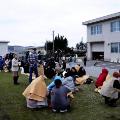

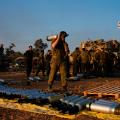
No comments:
Post a Comment